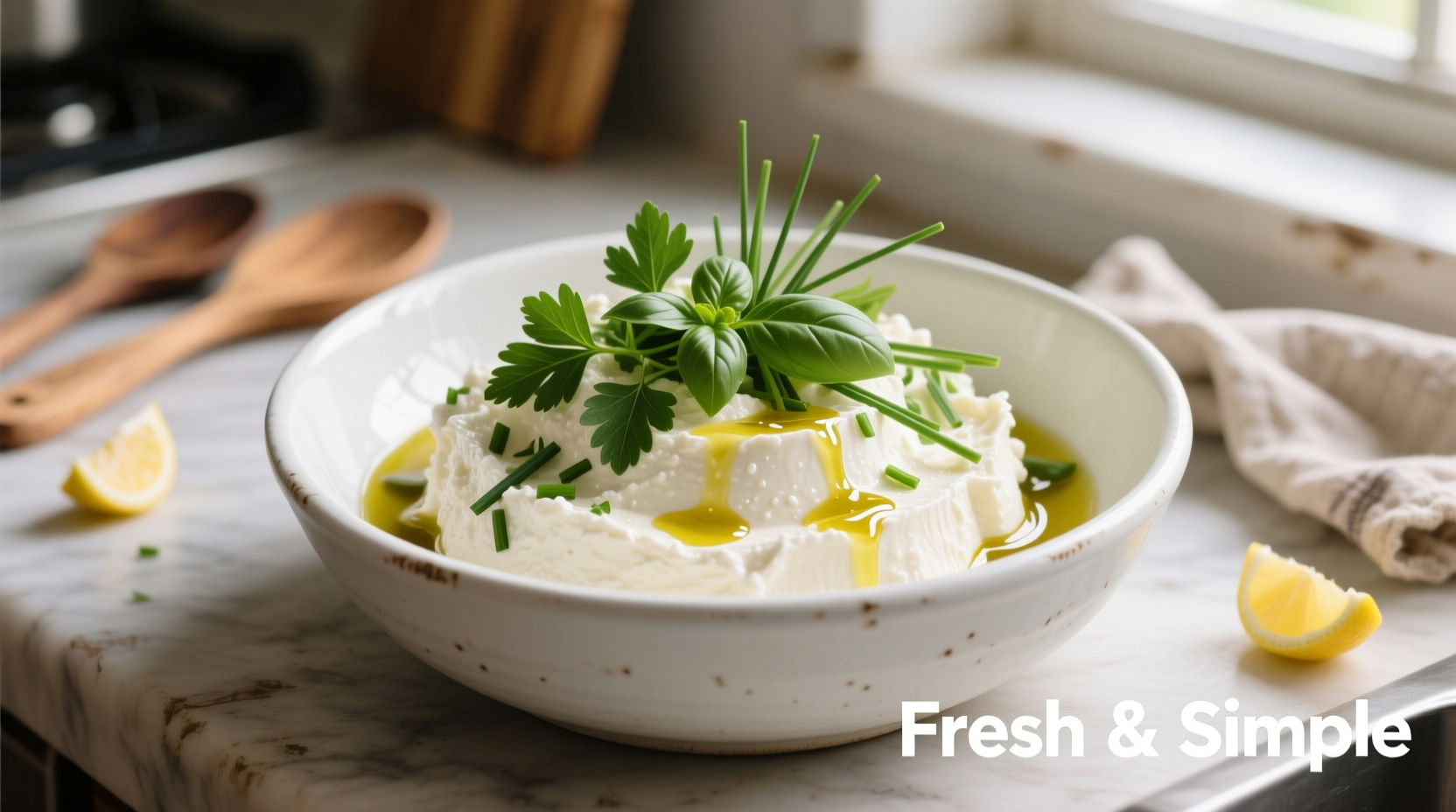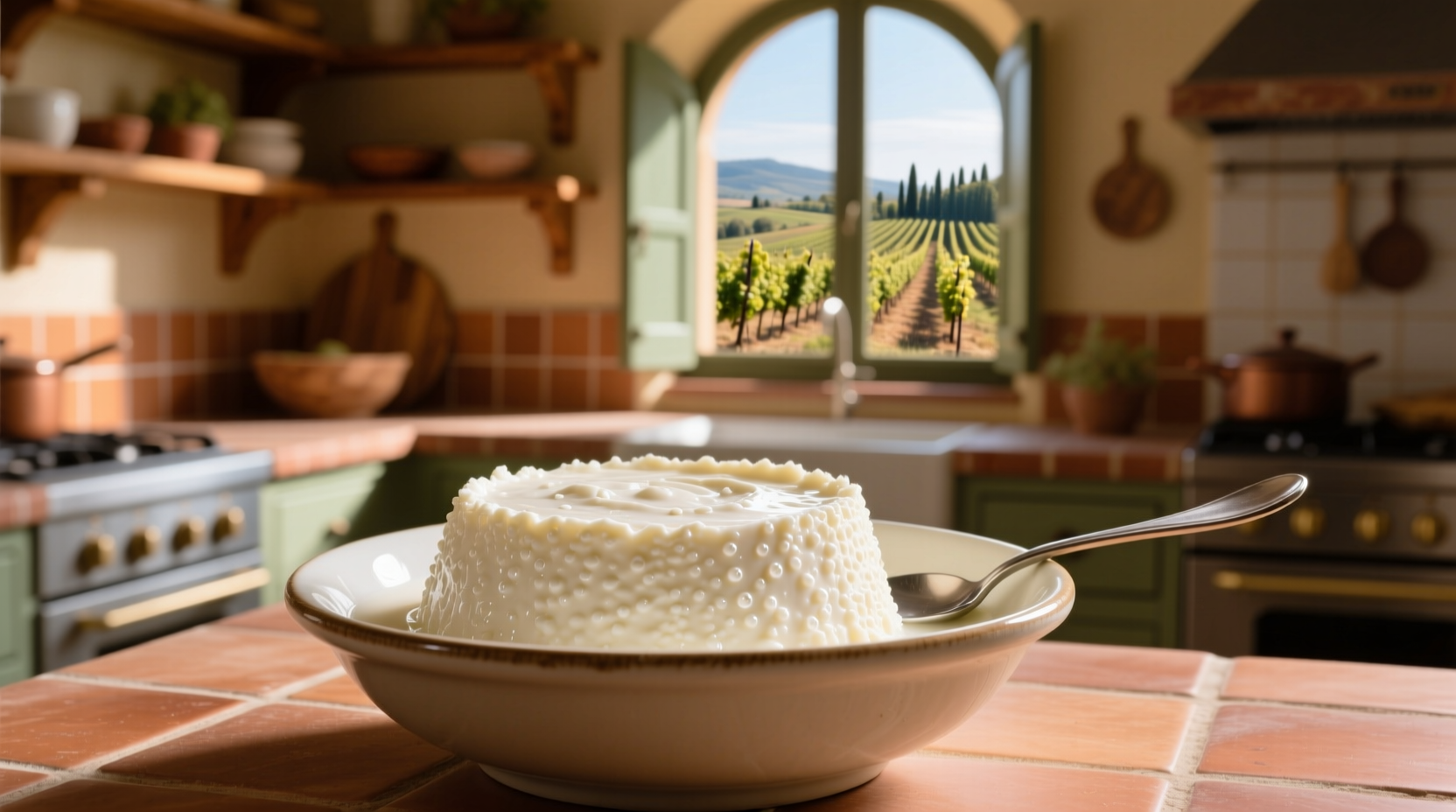Ever wondered what makes ricotta cheese stand out in your favorite lasagna or cannoli? Understanding what does ricotta cheese taste like goes beyond simple description—it's about experiencing its unique sensory profile that has delighted palates for centuries. Whether you're selecting it for a recipe or curious about this Italian staple, knowing its precise flavor characteristics helps you use it effectively in your cooking.
The Sensory Experience of Ricotta Cheese
When you first taste fresh ricotta, you'll notice its clean, milky flavor with a delicate sweetness that distinguishes it from sharper cheeses. Unlike aged varieties, ricotta's flavor remains refreshingly mild—think of the purest expression of milk transformed through careful processing. The subtle tang comes from the whey proteins used in its production, creating a balanced profile that's neither bland nor overpowering.
The texture plays a crucial role in ricotta's overall sensory experience. Properly made ricotta has a moist, grainy consistency with fine curds that melt gently on the tongue. This texture differs significantly from smoother cheeses like mascarpone while being less watery than cottage cheese. The mouthfeel should be creamy without being heavy, making it incredibly versatile across culinary applications.

Ricotta Compared: Understanding Flavor Differences
| Cheese Type | Flavor Profile | Texture Characteristics | Best Culinary Uses |
|---|---|---|---|
| Ricotta | Mild, slightly sweet with subtle tang | Light, grainy, moist curds | Lasagna, stuffed shells, cheesecake, cannoli |
| Cottage Cheese | More pronounced tang, saltier | Larger, distinct curds, more watery | Salads, dips, breakfast bowls |
| Mascarpone | Rich, buttery, less acidic | Ultra-smooth, dense, spreadable | Tiramisu, creamy sauces, dessert fillings |
| Farmers Cheese | Milder, less sweet, more neutral | Firmer, less moist, less grainy | Pierogi, blintzes, quiche |
This comparison reveals why understanding what does ricotta cheese taste like matters when substituting in recipes. Each cheese brings distinct characteristics that affect the final dish's flavor balance and texture. Ricotta's unique combination of mild sweetness and subtle tang makes it irreplaceable in traditional Italian desserts and baked pasta dishes.
Factors That Influence Ricotta's Flavor Profile
Several elements determine what does ricotta cheese taste like in your specific product:
Milk Composition Matters
The type of milk used significantly impacts ricotta's flavor. Traditional ricotta made from sheep's or goat's milk delivers a more pronounced, earthy flavor compared to cow's milk varieties. Whole milk ricotta offers richer, creamier notes while part-skim versions taste slightly more acidic and less sweet. According to the USDA FoodData Central database, whole milk ricotta contains approximately 13% fat compared to 8% in part-skim, directly influencing its mouthfeel and flavor release.
Freshness Is Critical
Freshness dramatically affects ricotta's taste profile. Ideally consumed within 3-5 days of production, fresh ricotta maintains its delicate sweetness. As it ages, the lactic acid develops more pronounced tanginess. Commercial varieties often contain stabilizers that can mute the natural flavor, while artisanal ricotta made without additives delivers the purest expression of what does ricotta cheese taste like in its optimal state.
How Production Methods Shape Flavor
Ricotta's distinctive taste stems from its unique production process. Unlike most cheeses that form curds from casein, ricotta is made by recooking whey—the liquid byproduct of cheese production—with acid to precipitate the remaining proteins. This secondary cooking process creates ricotta's characteristic mild flavor and fine-grained texture.
The temperature and duration of heating directly impact the final product's characteristics. Traditional methods using gentle, prolonged heating yield sweeter ricotta with smaller curds, while modern industrial processes using higher temperatures create a more acidic product with larger curds. This explains why what does ricotta cheese taste like can vary significantly between artisanal producers and mass-market brands.
Practical Applications: Using Ricotta's Flavor Profile
Savory Dishes
Ricotta's mild flavor makes it perfect for absorbing complementary ingredients in savory applications. In baked pasta dishes, it blends seamlessly with tomato sauces and meats while providing creamy contrast. When combined with lemon zest, black pepper, and fresh herbs, ricotta transforms into a sophisticated filling that highlights what does ricotta cheese taste like when properly enhanced.
Sweet Preparations
The subtle sweetness in ricotta shines in desserts. Traditional Italian cannoli filling combines ricotta with powdered sugar, vanilla, and sometimes chocolate chips, allowing the cheese's natural flavor to complement rather than compete with other ingredients. For a lighter option, try mixing ricotta with honey and fresh berries—the cheese's mild profile won't overpower delicate fruit flavors.
Shopping and Tasting Tips
When selecting ricotta to experience authentic what does ricotta cheese taste like characteristics, look for these qualities:
- Check the ingredient list: Authentic ricotta contains only milk, whey, vinegar or citric acid, and salt
- Examine the texture: Should appear moist but not watery, with fine, uniform curds
- Smell test: Fresh ricotta has a clean, milky aroma without sour or ammonia notes
- Taste before using: Good ricotta should taste mildly sweet with just a hint of tang
For the most authentic experience of what does ricotta cheese taste like, seek out fresh, locally made varieties from dairy producers who specialize in Italian cheeses. Many farmers' markets feature small-batch ricotta that showcases the purest expression of this versatile ingredient.
Storing Ricotta to Preserve Flavor
Proper storage maintains ricotta's delicate flavor profile. Keep it in its original container with the lid sealed tightly in the coldest part of your refrigerator. For extended freshness, place a piece of parchment paper directly on the surface before closing the container to prevent drying. Fresh ricotta maintains optimal flavor for 5-7 days when stored properly—beyond this, the lactic acid develops more pronounced tanginess that may not suit all recipes.











 浙公网安备
33010002000092号
浙公网安备
33010002000092号 浙B2-20120091-4
浙B2-20120091-4